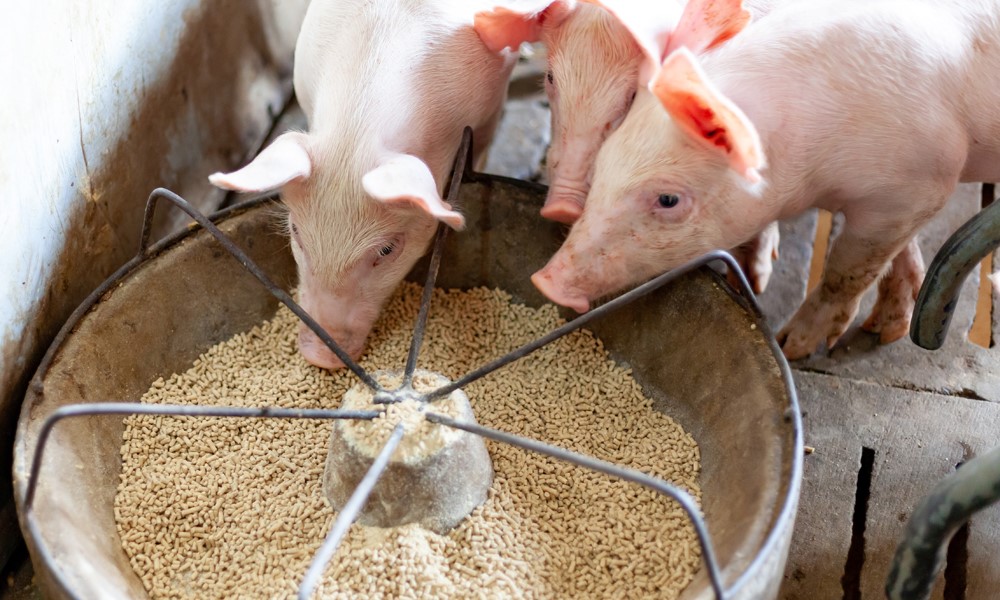Webinar Recap: 5 Things Lenders Need to Know About Beef and Pork Markets

To help lenders better understand the challenges livestock producers face today, Brett Stuart from Global AgriTrends presented an in-depth webinar on March 9 on the global trends in beef and pork. These are just some of the highlights.
1. Grain prices, inflation squeezing livestock margins
Grain prices are up and that’s showing in the valuation of the livestock prices.
“But pretty much no one on earth is profitable right now because of the high price of grain,” Stuart says. “And so until we get some kind of break on grain, there are going to be tough, tough margins for livestock.”
Stuart also pointed out a not-so-obvious truth about the meaning and impact of inflation trends: Negative inflation does not mean we’re going back to the prices we’re used to.
Though global food indexes have returned to trendline, food prices around the world are 32% higher than they were before the pandemic, and the dollar has lost 11% of its value since January 2020.
Even if inflation trends are negative, “it’s not going to feel negative.”
2. Is recession coming for beef and pork?
After reviewing more than 50 years of recession cycles, one thing that keeps beef prices under control in times of recession are the tiers of products — from expensive tenderloins to cheap hamburger.
When you look at the 2008 recession, when people were losing their vehicles and their homes, the retail price of beef went up 10% in the first 10 months of the recession fueled by the higher demand for hamburger.
Pork prices are similarly steady in times of recession. What the pandemic taught us is when people stop eating at restaurants and buy their food at the store, it’s good for beef and pork. Even though restaurants can be hit hard, the impacts on beef and pork are offset by higher grocery demand.
“So I guess what I’m saying here is I’m not too worried about a recession crashing our prices for beef and pork,” Stuart says.
3. Expect tighter beef supplies and higher prices for the next 3 years
The shrinking U.S. beef herd is a big story. Between the U.S., Brazil and Australia, we’ll see a 34% decline in exports of grass-fed beef, fueling higher prices well into 2026.
Widespread drought hits cattle country
In the U.S., the driving force of the shrinking herd count comes from the cascading effects of the largest drought in recent history. Some 40% of the U.S. has been in drought for 225 weeks — twice as a long as the drought of 2012. Hard hit areas are in the Central and Southern Plains regions where there are millions of head of cattle.
Culling the herd
Because of the challenges of the drought, 13.5% of the U.S. beef herd was slaughtered in 2022.
“That is the highest level since 1984,” says Stuart.
While culling the herd lifts supplies temporarily, the market can expect a tightening of the funnel for the next few years, and higher prices. Not only is grass-fed beef in high demand in the U.S., it’s having a big moment in China.
“Once that bulge goes through the snake there’s not much behind them,” Stuart says. “USDA forecasts a 6% drop in beef in 2023. That’s the biggest one-year drop in more than 44 years. That’s three pounds per capita off the U.S. beef supply — every man, woman and child in America will have three pounds less beef this year.”
3 years to restore the herd
Between now and 2026, “there’s no real opportunity to make more beef,” Stuart says. Because if a rancher retains a heifer calf in 2023, the first round of beef production would go to market in 2026.
What does this mean for beef producers?
- Higher calf prices this year and beyond.
- Feed prices will be a major concern for calf producers — “a bushel of corn changes that calf value by $16,” Stuart says.
- Feedlots and packing plants will bid more aggressively to run at full capacity, so they’ll lose leverage.
4. African swine fever continues to disrupt pork
African swine fever (ASF) remains a major problem around the world. It is the world’s most feared hog disease and continues to disrupt global markets and global supplies.
Since 2021, ASF was recorded in 41 countries with more than a million animals culled — seven new countries in the past year. There’s still no vaccine, meaning contagion will continue to weigh down global pork markets.
5. Wetter weather returns with El Nino
The drought’s grip on agriculture should lessen in 2023, as climate patterns shift from drier trends of La Nina to a wetter El Nino.
“The question is, when does it come,” says Stuart. “Do we get a bunch of rain right in the middle of planting season and have flooding in the Midwest? Or do we get the corn crop in the ground and we have beautiful rain all summer?”
Want to watch the webinar?
Reach out to a Relationship Manager in your area to expand your access to the insights presented in the webinar.
